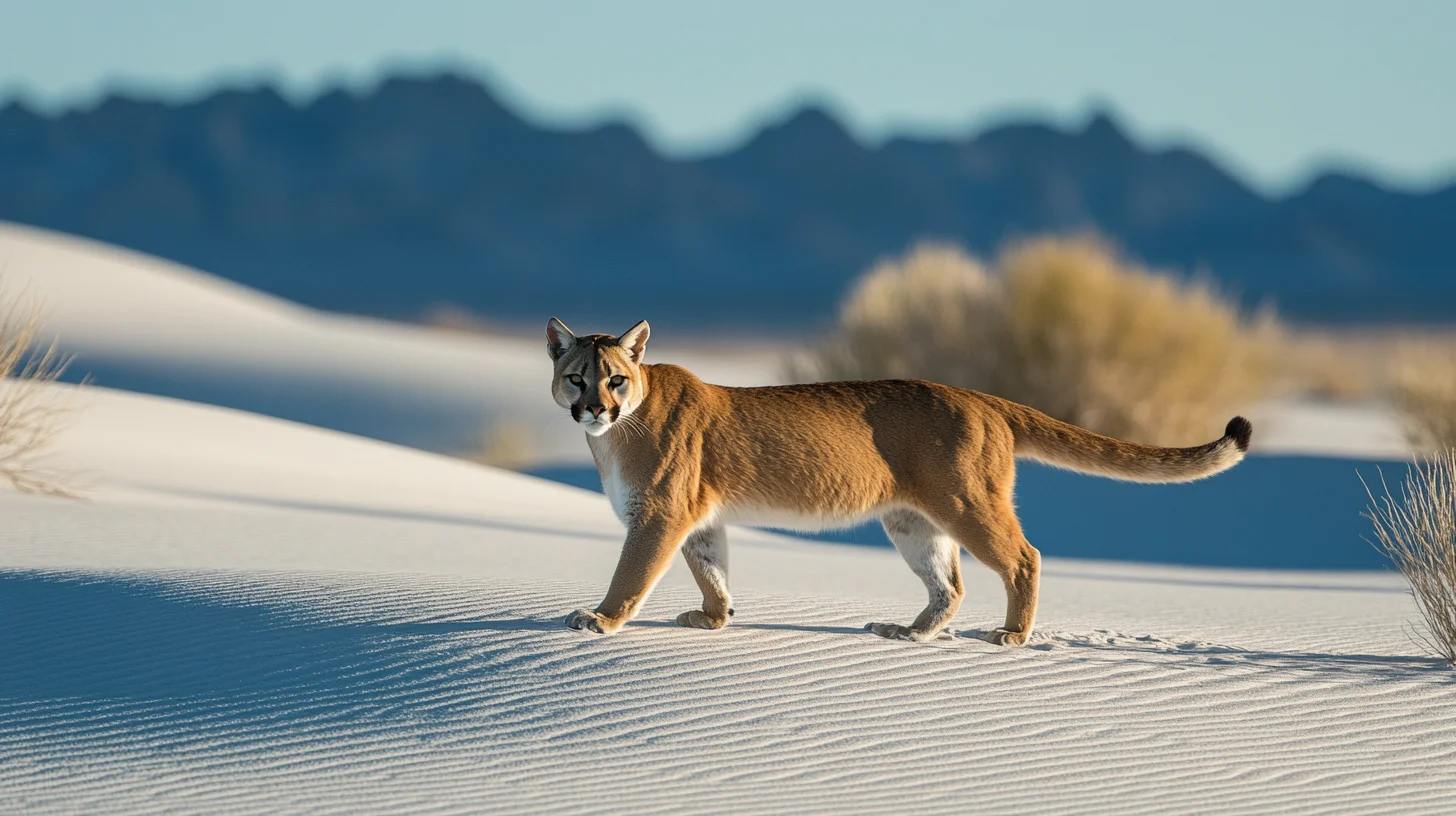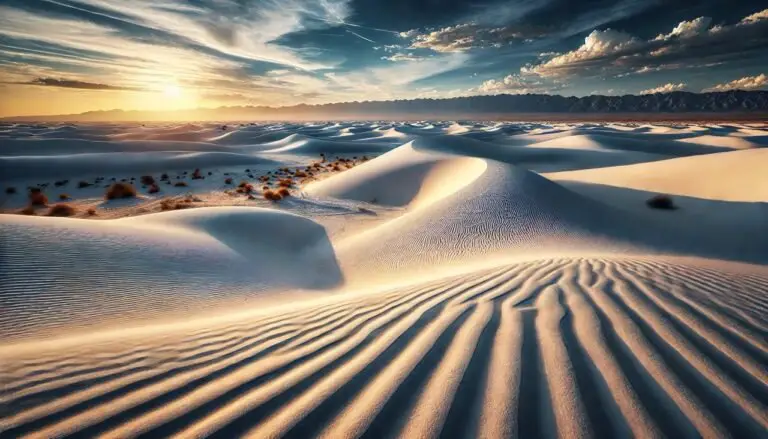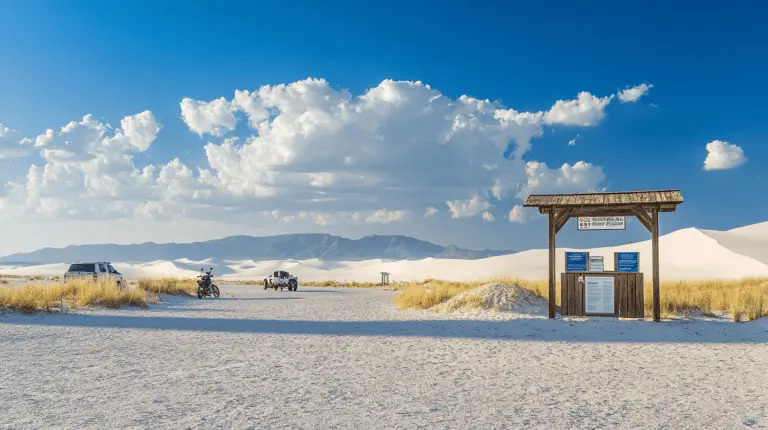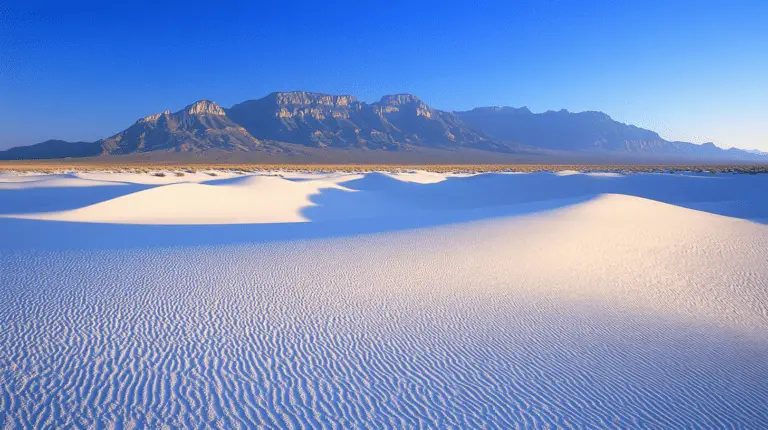White Sands National Park Animals
Animal Life Galore
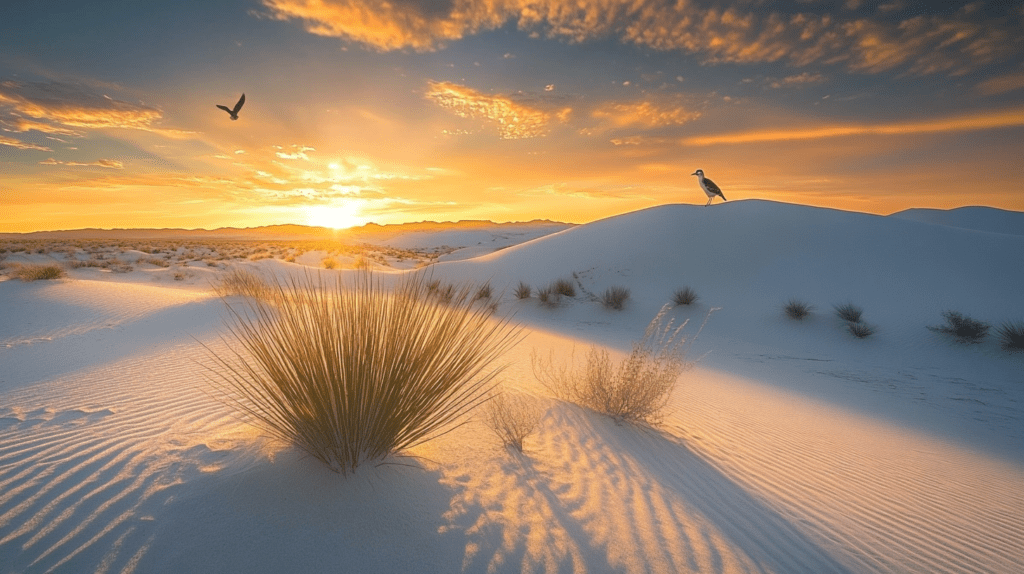
At White Sands National Park, you’re in for a treat with a wide range of critters that have made this giant sandbox their home. From slithering reptiles to graceful birds, each brings their own touch to this vibrant space.
| Animal Group | Example Species |
|---|---|
| Birds | Wrens, Mockingbirds, Raptors, Roadrunners |
| Reptiles | Snakes, Lizards, Turtles |
| Mammals | Desert Cottontail, Kit Fox, Mule Deer |
| Amphibians | Frogs, Salamanders |
| Invertebrates | Butterflies, Moths, Beetles |
Spread across 275 square miles, the dunes here are unique, made from crystallized gypsum. Fun fact: it’s a pretty rare material to find as sand. This makes the park a perfect spot for over 220 species of birds, including the chirpy wrens, cheeky mockingbirds, majestic raptors, and speedy roadrunners.
Slithering and crawling around, you’ve got a whole gang of snakes, lizards, and turtles. Each of these adds a bit more excitement to the mix (National Park Service).
Diverse Wildlife in White Sands National Park

White Sands National Park is home to a remarkable array of wildlife, with over 800 species adapting to the unique gypsum dune environment. From mammals and birds to reptiles and insects, the park’s ecosystem supports a diverse community of animals, many of which have developed special adaptations to thrive in this challenging habitat.
One-of-a-Kind Ecosystem

White Sands isn’t just a park; it’s a little ecological wonder. The gypsum dunes, unlike your usual sandy scenes, offer a different playground for a variety of species (National Parks Conservation Association). This setup provides quirky little hideouts for all sorts of plant and animal life.
The plant buddies at White Sands are superheroes in their own right. They hold the dunes together and dish out food and shelter for their animal co-stars (National Park Service). The 220-plus bird species hanging out here make this park a paradise for those with binoculars and a love for feathers.
Amphibians, like the chatty frogs and mysterious salamanders, love the temporary pools that pop up after the rain (NPS.gov). And don’t forget the invertebrates—those butterflies, moths, and beetles add to the park’s buzzing life.
For more cool details about visiting and getting around the park, check out White Sands National Park.
Want to dive deeper into White Sands’ marvels?
Nocturnal Life in White Sands National Park

While daytime visitors may not always spot wildlife, White Sands National Park comes alive at night. Many of the park’s animals are nocturnal, emerging after sunset to hunt, forage, and explore.
Nighttime wildlife watching can reveal fascinating creatures such as kit foxes, kangaroo rats, and various bat species. The park occasionally offers guided night hikes, providing visitors with a unique opportunity to experience the dunes’ nocturnal ecosystem.
Birds of White Sands National Park
When you wander through White Sands National Park, keep your eyes peeled for the dazzling array of bird species that call this park home. With over 220 birds to spot, it’s a birdwatcher’s paradise and a thrill for any nature lover.
Feathered Friends Galore
The park hosts a wide variety of birds thanks to its mix of sand dunes, grasslands, and water spots. You’ll likely come across wrens, mockingbirds, raptors, and, of course, the famous roadrunners. These habitats support both the park’s year-round residents and flocks of migratory birds, making it a lively place to watch birds any time of the year.
Here’s a taste of the bird diversity you might bump into:
| Bird Type | Notable Species |
|---|---|
| Wrens | Cactus Wren, Bewick’s Wren |
| Mockingbirds | Northern Mockingbird, Sage Thrasher |
| Raptors | Red-tailed Hawk, American Kestrel |
| Roadrunners | Greater Roadrunner |
Learn more about the critters at White Sands National Park.
Standout Bird Species
Cactus Wren

Sporting a spotted chest and a loud call, the Cactus Wren is a common park resident. They’re smart nesters too, often building in cacti to stay safe from predators.
Northern Mockingbird
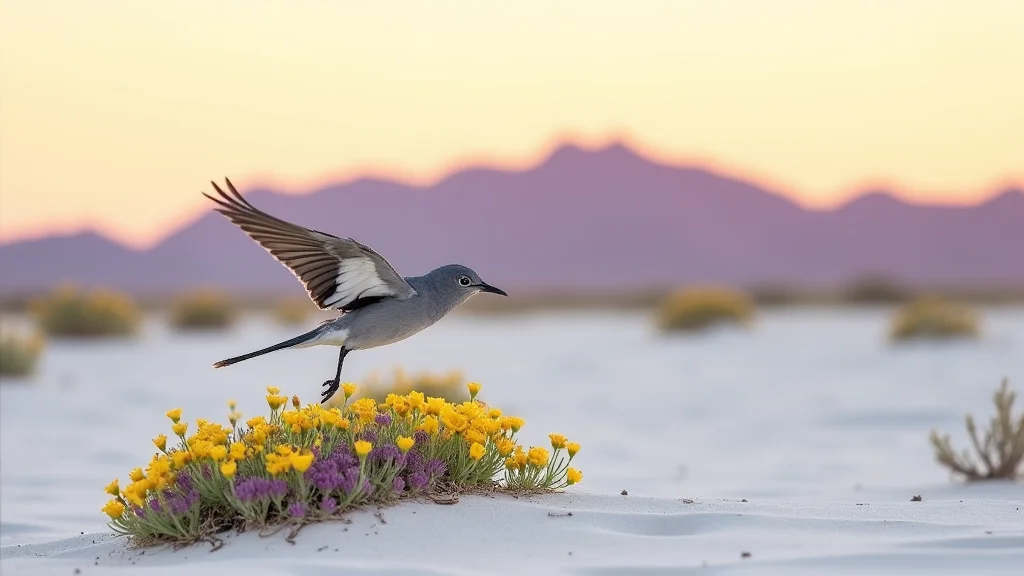
The Northern Mockingbird is another park favorite. Known for their impressive vocal range, they can mimic the tunes of other birds and even some mechanical sounds.
Red-tailed Hawk

Look up, and you might see a Red-tailed Hawk cruising the skies. Known for their sharp vision and hunting prowess, these birds are easily recognized by their reddish tail feathers.
Greater Roadrunner
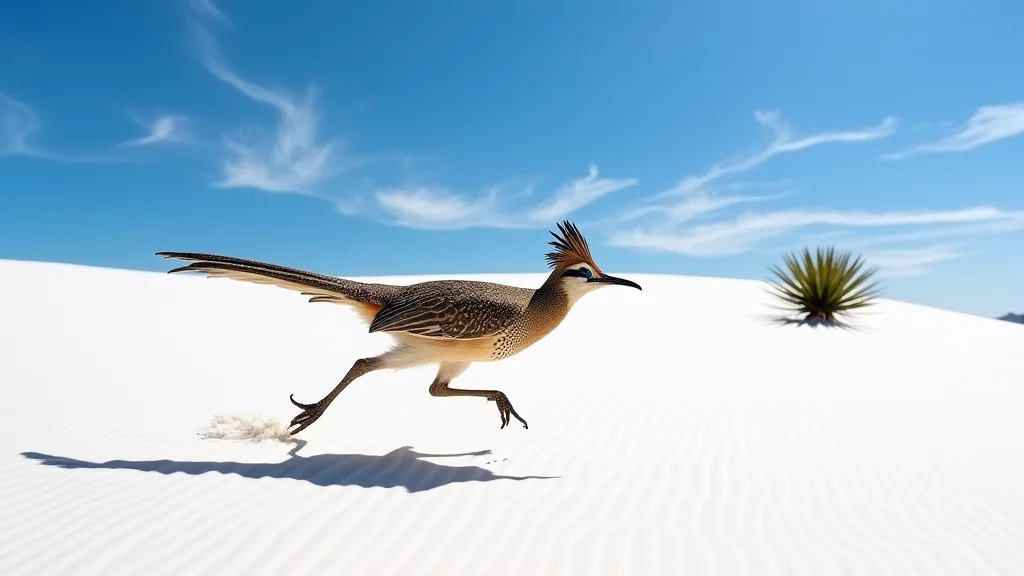
A trip to White Sands isn’t complete until you spot a Greater Roadrunner. Famous from the cartoons, these ground birds can run really fast and are often seen zipping across the desert chasing insects and small critters.
For the best bird-watching moments, visit the park in the early morning or late afternoon when birds are most active. For more tips, including White Sands weather and park tours, check out our handy guides.
Whether you’re a hardcore birdwatcher or just curious, the birds of White Sands National Park will make your visit unforgettable. Don’t forget your binoculars and a field guide to help you spot and identify these fascinating creatures.
Visit the White Sands National Park Visitor Center for more info on bird-watching spots and other wildlife fun.
Aquatic and Land Mammals
Discovering the lively, furry (and sometimes featherless) residents of White Sands National Park is a treat you don’t want to miss. Here’s a peek at who calls this breathtaking spot home.
Mammalian Hideouts
White Sands National Park has a mix of hangouts for its various furry friends. From the edge of the dune fields to the desert scrubs, each place provides food, shelter, and space to raise the kiddos.
| Hangout Spot | Usual Suspects |
|---|---|
| Edge of the dunes | Badgers, Bobcats |
| Dune-desert junction | Black-tailed Jackrabbits |
| Desert scrub | Desert Cottontails |
| Deep in the dunes | Kit Foxes |
White Sands Wildlife: Unique Adaptations
Many animals in White Sands National Park have evolved to blend in with their surroundings. This phenomenon, known as cryptic coloration, is particularly evident in species like the bleached earless lizard and the Apache pocket mouse.
These animals have developed lighter colorations over time, allowing them to camouflage effectively against the white gypsum sand. This adaptation not only helps them avoid predators but also gives them an advantage when hunting prey.
Meet the Locals
Badgers
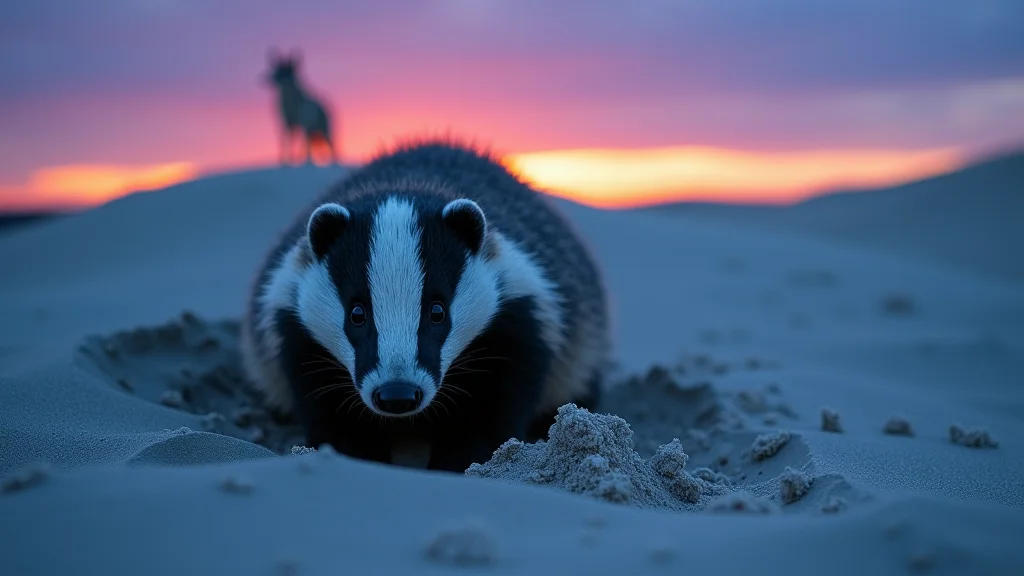
You’ll find badgers chilling on the outer edges of the dunes where the grub’s plentiful. They’re like the construction workers of the animal world, using those huge claws to dig burrows and hunt down rodents, reptiles, and bugs. Sometimes, they even hang out with coyotes—though we’re not sure if it’s for fun or a more sinister reason.
Black-Tailed Jackrabbits
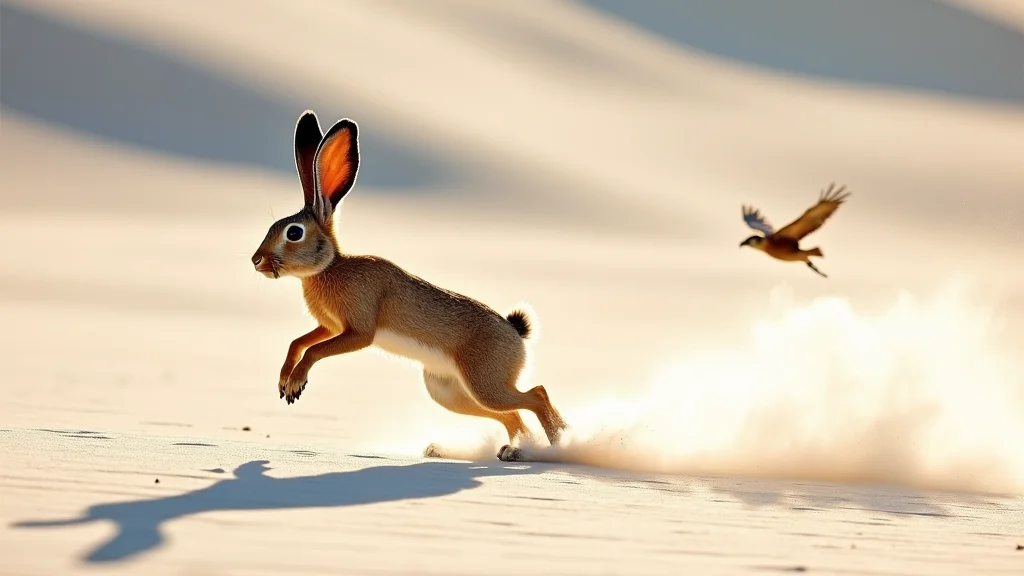
Speed demons of the park, the black-tailed jackrabbits love the spot where the dunes meet the desert. These guys can hit speeds up to 40 mph when evading predators like coyotes. Imagine, their babies are hopping and ready to roll just two weeks after birth.
Bobcats

Night owls of the mammal kingdom, bobcats usually skulk around the edge of the dunes. They hunt small rodents, ground-nesting birds, and bugs. They like their space, so each one has a territory that spans miles. Keep your eyes peeled in the twilight hours to catch a glimpse.
Kit Foxes
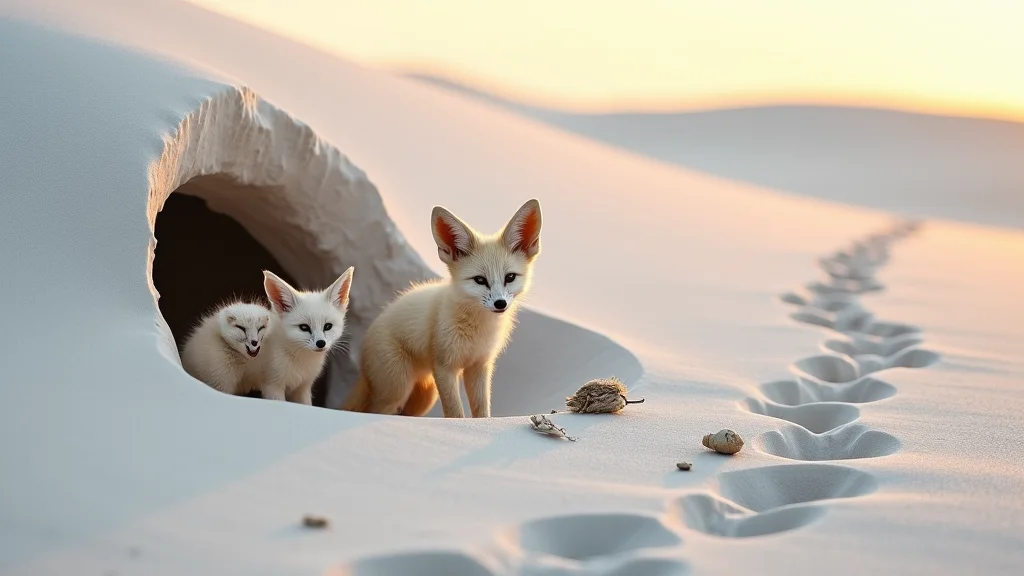
Kit foxes, the top dogs of the dunes, may sound like giants, but they’re actually lightweights at just five pounds. These picky eaters hunt small critters like kangaroo rats and insects. But life’s tough—great horned owls have them on the menu too.
Desert Cottontails
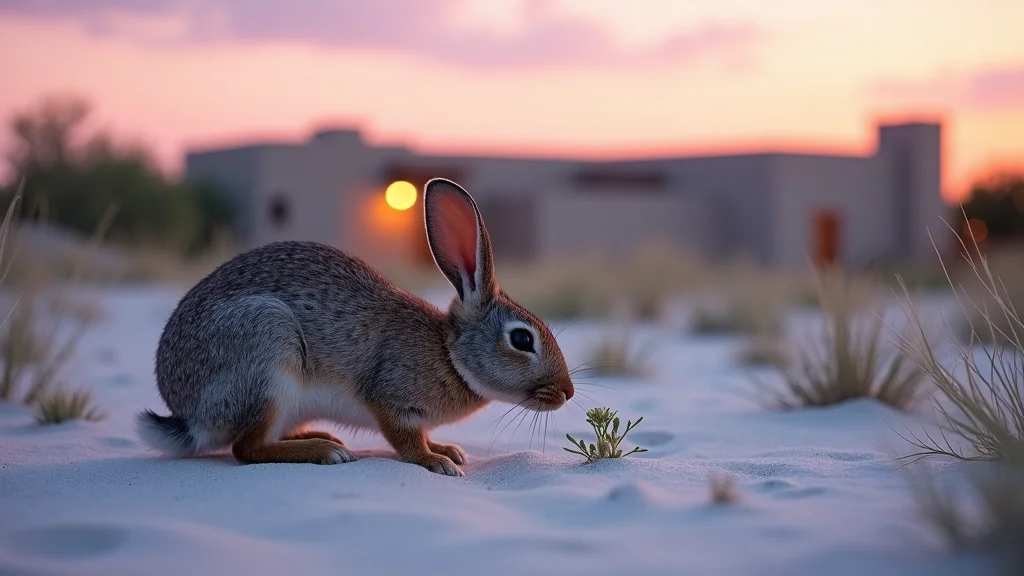
Hanging out near the visitor center and desert scrub areas, cottontails enjoy a vegetarian diet of grasses and leaves. During the scorching summer, they’re nocturnal, saving their energy for nighttime snacking.
Want to catch sight of these fascinating critters? Dive into White Sands National Park animals. And for an up-close encounter, check out White Sands camping options for a night under the stars (and probably some bunny sightings).
Reptiles and Amphibians
A trip to White Sands National Park isn’t just about the dunes. You’re in for a wild ride with some of the coolest reptiles and amphibians around. Let’s meet the park’s star residents.
Seasonal Wildlife in White Sands
The wildlife of White Sands National Park varies with the seasons. Spring brings migratory birds and the emergence of reptiles from brumation. Summer sees increased activity among diurnal animals in the early mornings and late evenings.
Fall witnesses the preparation for winter, with some species storing food or preparing for hibernation. Winter, though quieter, still offers opportunities to observe hardy year-round residents and their tracks in the sand.
Reptile Roundup
White Sands has some slick reptiles that call it home, each with some pretty rad tricks up their scaly sleeves. They’ve figured out how to thrive in the sandy, dry conditions here.
| Reptile Species | What’s Cool About Them |
|---|---|
| Desert Horned Lizard | Famous for its horns and squirting blood from its eyes. |
| Coachwhip Snake | A fast, slender speedster that’s hard to catch. |
| Ornate Box Turtle | Easy to spot with its dome-shaped shell covered in fancy patterns. |
These reptiles are pros at surviving in this harsh setting. The Desert Horned Lizard, for instance, disappears right into the white sands, pulling off top-tier camouflage. The Coachwhip Snake? It zips away before you even know it’s there, hunting down its next meal.
Want more dirt on these scaly pals? Check out White Sands National Park Animals for the inside scoop.
Amphibian Adventures
Think an arid desert is no place for amphibians? Think again. White Sands is a surprise powerhouse when it comes to frogs and salamanders. They’ve got some crazy tricks up their sleeves to stay alive here.
| Amphibian Species | What’s Cool About Them |
|---|---|
| Couch’s Spadefoot Toad | Digs into the sand to beat the heat, showing up only after it rains. |
| Western Tiger Salamander | The park’s lone salamander, living it up in temporary rain puddles. |
These amphibians are the Houdinis of the park. Couch’s Spadefoot Toad can lie low underground for ages, popping up when it gets wet. The Western Tiger Salamander goes pond-hopping in the little pools that appear after it rains.
Dive into more of their story by browsing through our Plants That Keep Them Company.
As you hike through the trails or camp under the stars at White Sands, keep an eye peeled for these fantastic creatures. Want more deets on where and how to spot them? Swing by the Visitor Center and grab a Park Map for planning your adventure.
Happy exploring, critter lovers!
The Tiny Wonders of White Sands
White Sands National Park isn’t just about its stunning dunes; it’s also a bustling sanctuary for small critters. With over 600 types of invertebrates calling it home, this place is a treasure trove for bug enthusiasts.
The Bug Parade
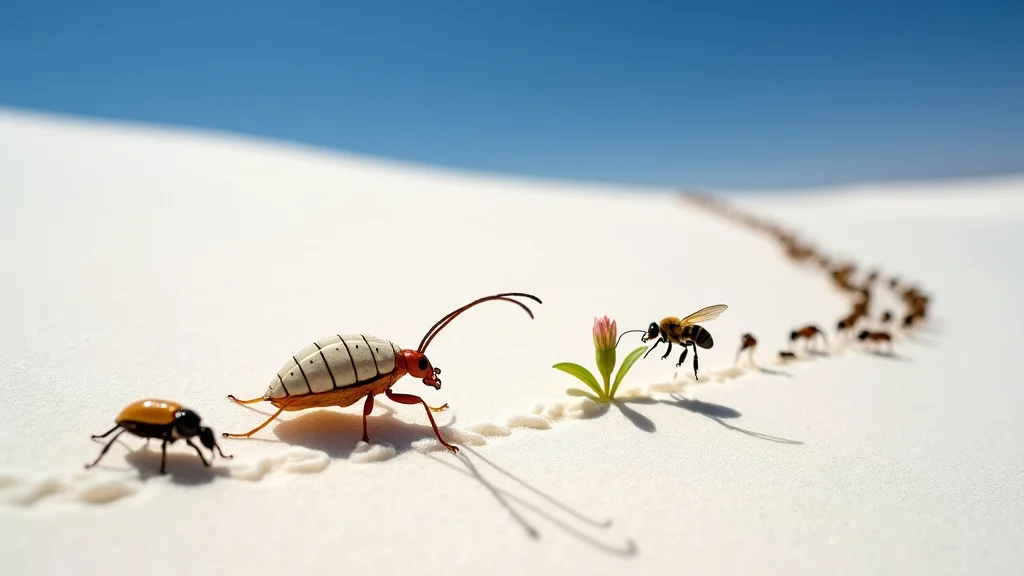
As you wander through White Sands National Park, you’ll bump into an array of insects that have made a cozy home here. The harsh desert conditions have turned these insects into resilience maestros, adapting in cool and quirky ways to survive and thrive.
| Bug Type | Noteworthy Species | Cool Quirks |
|---|---|---|
| Beetles | Darkling Beetle | Masters of dry living |
| Bees | Alkali Bee | Loves salty soil |
| Ants | Sand Ant | Architects of gypsum nests |
These creepy-crawlies are more than just survivors; they play a crucial role in making sure the food chain ticks along smoothly. Their bizarre behaviors and clever survival tricks are endless sources of fascination.
Funky Moth Crew
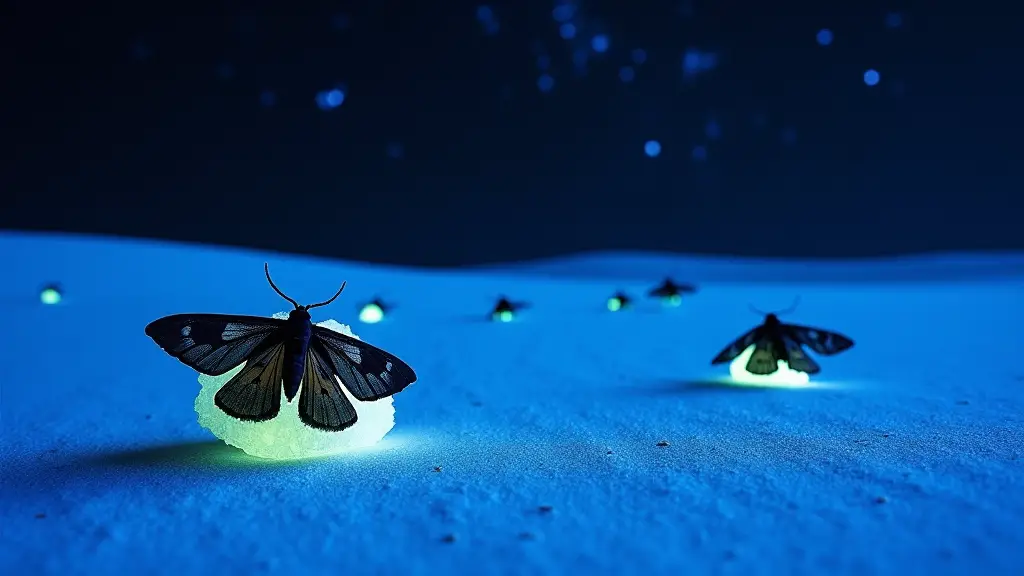
Out of all the insects, moths steal the show in the white sands. Unique and diverse, some moths here are exclusive to the dunes. Take the Protogygia whitesandsensis, for example. It’s the king of the moths in the park, flying in the chilly winter with its dark wings soaking up the sun to stay active (New Mexico Magazine).
| Moth Species | Unique Abilities |
|---|---|
| Protogygia whitesandsensis | Winter flyer; dark wings keep it warm |
| Schinia bakeryi | Camouflage expert, blending into gypsum dunes |
These remarkable moths are living proof of nature’s ability to pull off some wacky yet brilliant adaptations.
So, next time you’re at the park, take a moment to spot these amazing little creatures doing their thing. They’re a crucial part of the park’s lifeblood. Don’t forget to grab our park map and check out camping options to make the most of your adventure.
Wildlife Survival Hacks
Nature’s Tricksters
The animals in White Sands National Park have mastered some crafty techniques to survive the park’s extreme conditions. Their unique adaptations let them not just survive, but totally rock even in the harsh landscape.
- Blend In or Get Eaten: Many creatures at White Sands have gotten really good at playing hide and seek. The bleached earless lizard, for example, has skin that matches the white gypsum dunes, making it super hard for predators to spot them (iNaturalist).
- Beat the Heat: To deal with the scorching temperatures, some animals have changed their schedules. The kit fox is a prime example—it hunts at night to avoid the blistering daytime sun and chills out in cool burrows during the day (National Park Service).
- Smart Eating: Finding water can be tough, so some animals have gotten creative with their diets. Kangaroo rats, for instance, can pull moisture directly from the seeds they munch on, cutting down their need for water (National Parks Conservation Association).
| Trick | Animal | Why It Rocks |
|---|---|---|
| Camouflage | Bleached earless lizard | Hides from predators |
| Night Owl Schedule | Kit fox | Stays cool by hunting at night |
| Snacks with Benefits | Kangaroo rat | Gets water from food, no need for a drink |
Unique Animal Characters
Some animals at White Sands National Park are like the superheroes of the natural world. They’ve adapted in amazing ways to conquer the challenges of their environment.
- Bleached Earless Lizard: This little guy’s sand-colored skin helps it go undercover against predators. It also digs into the cool sand to beat the scorching midday heat (New Mexico Magazine).
- White Sands Pupfish: Found in the park’s rare water pools, these fish can handle high salinity and extreme temperature swings. They’re some of the few aquatic survivors in this dry place (NPS White Sands National Park).
- Kit Fox: Warm climates? No problem for this fox. With big ears that act like radiators and nocturnal habits, it’s perfectly suited for desert life.
Conservation Efforts for White Sands Animals
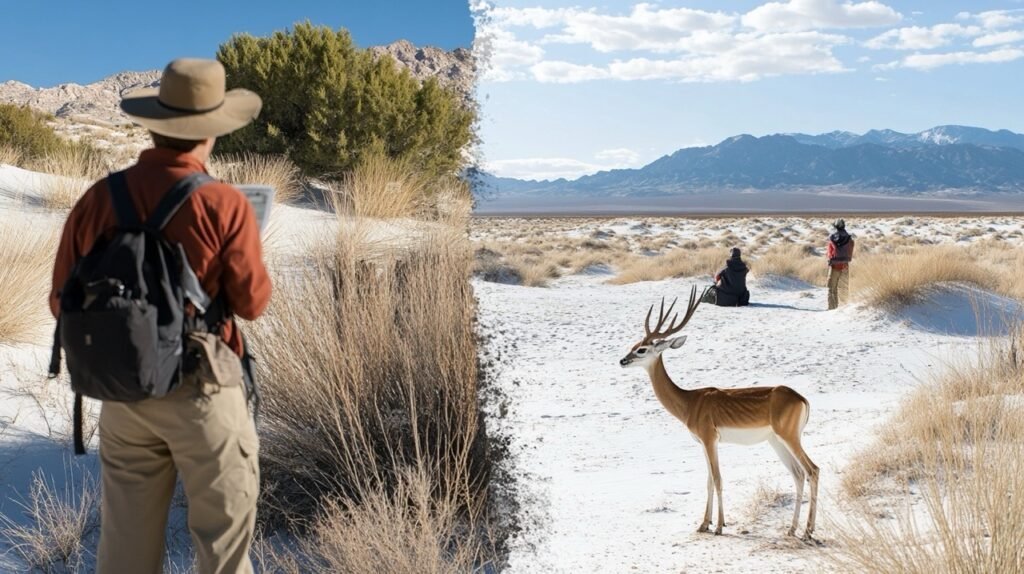
White Sands National Park is not just a scenic wonder but also a crucial habitat for numerous species, some of which are found nowhere else on Earth. The National Park Service, in collaboration with wildlife biologists and conservationists, conducts ongoing research and monitoring programs to protect the park’s unique fauna.
These efforts include habitat preservation, population studies, and initiatives to mitigate human impact on sensitive species. Visitors to White Sands National Park play a vital role in wildlife conservation.
By adhering to park regulations, staying on designated trails, and practicing Leave No Trace principles, tourists can help preserve this delicate ecosystem for future generations.
Thinking of checking out these cool critters? Set up your adventure with White Sands National Park Tours and don’t forget your White Sands National Park Map for top wildlife spots.
For peak viewing times, look up White Sands National Park Hours and check the White Sands National Park Weather.

